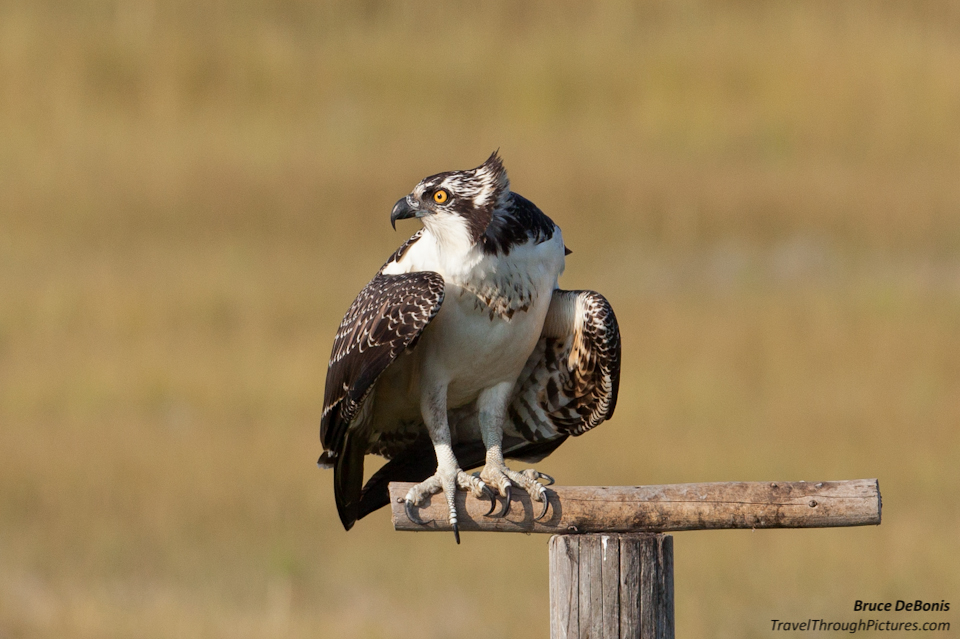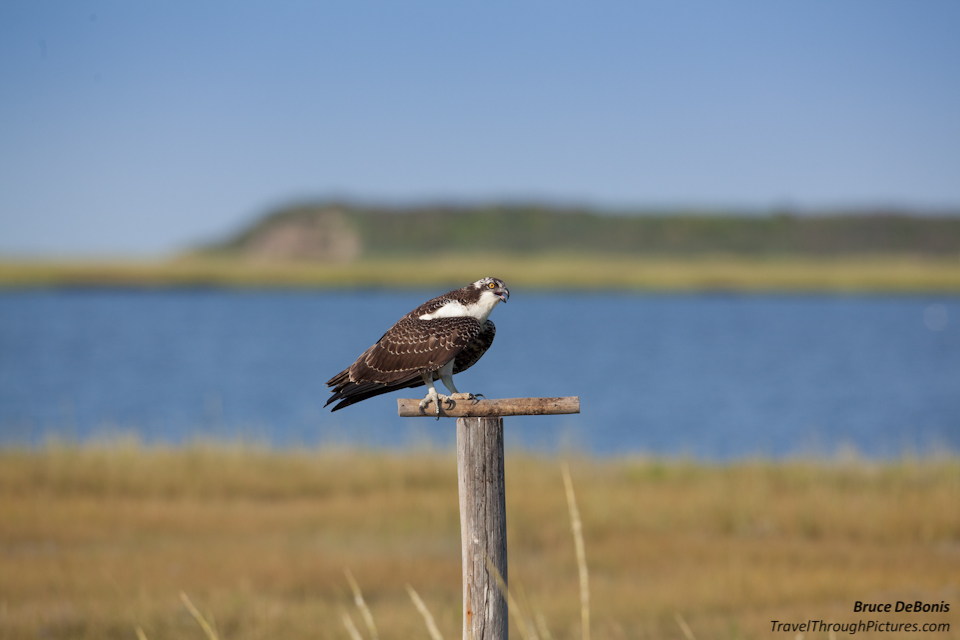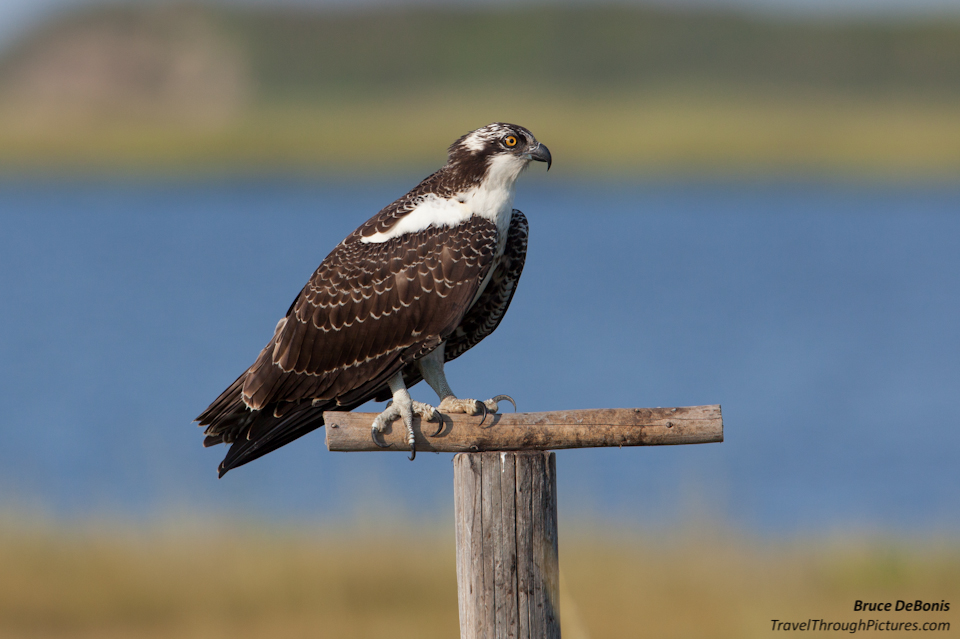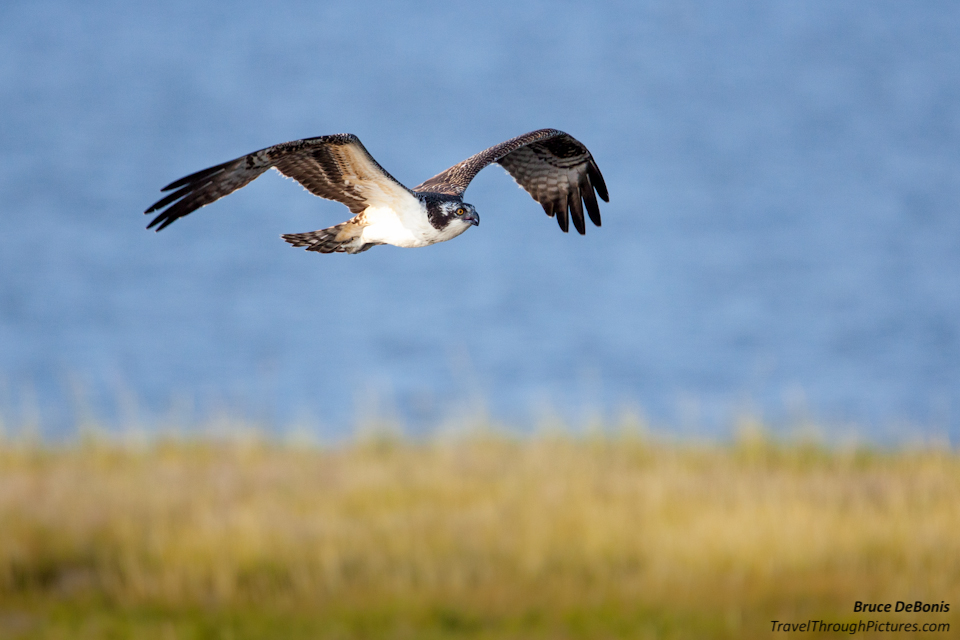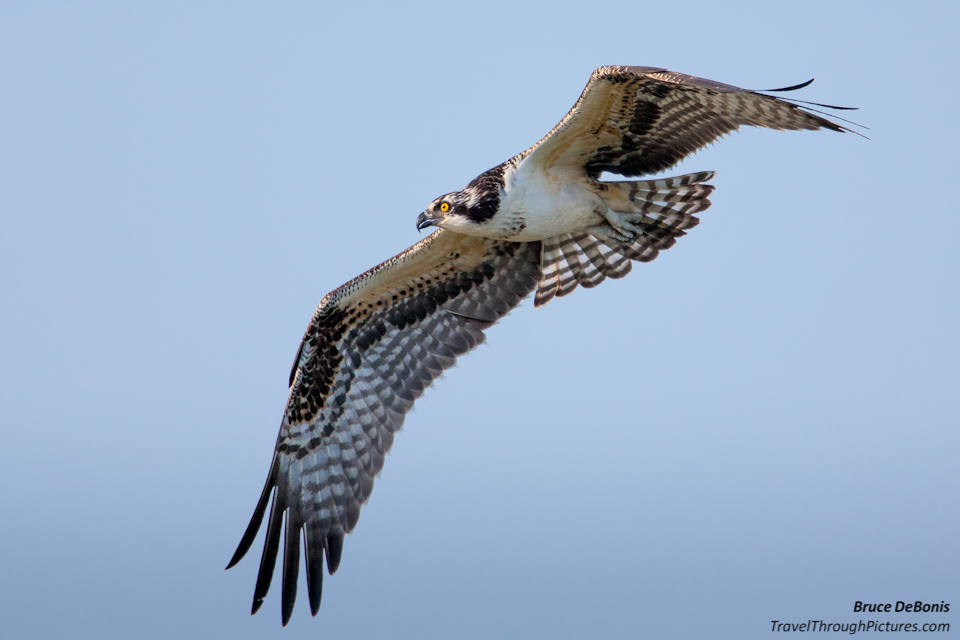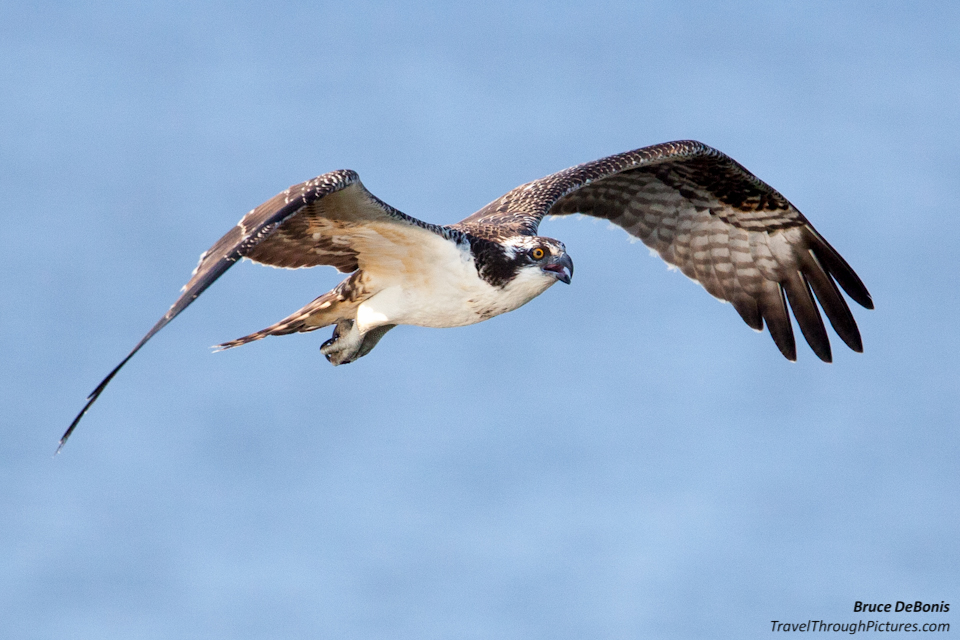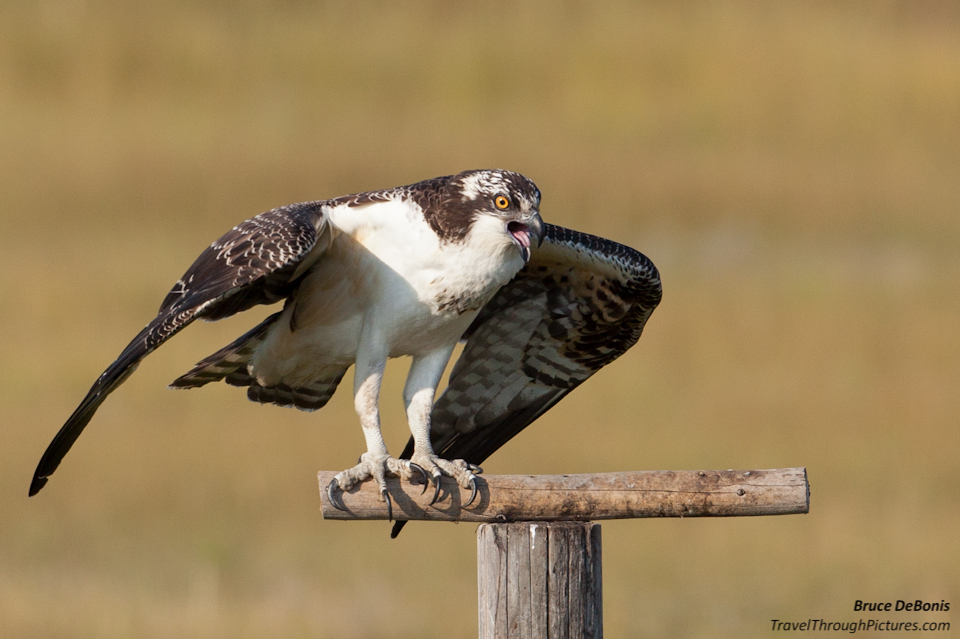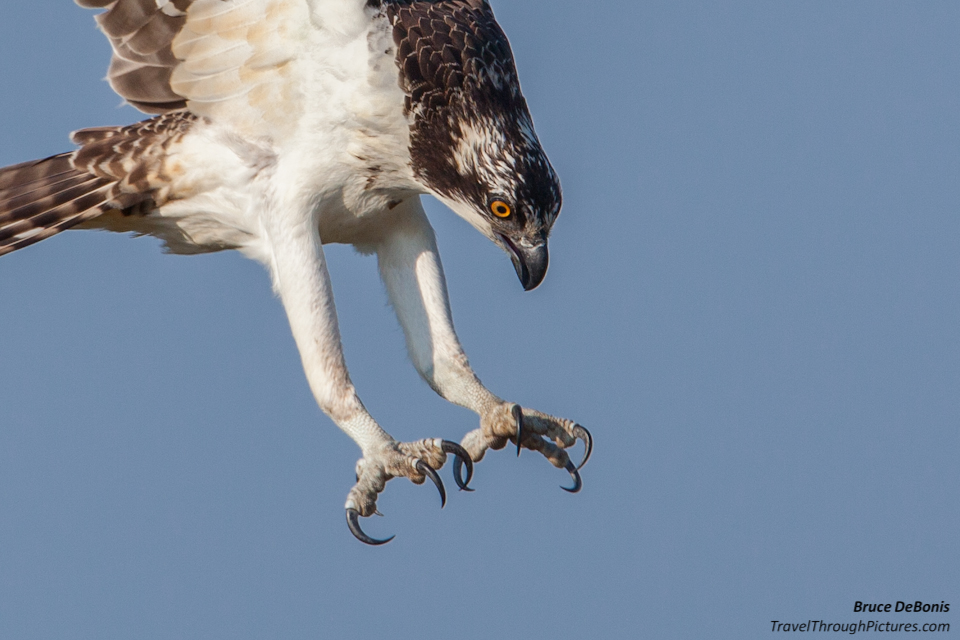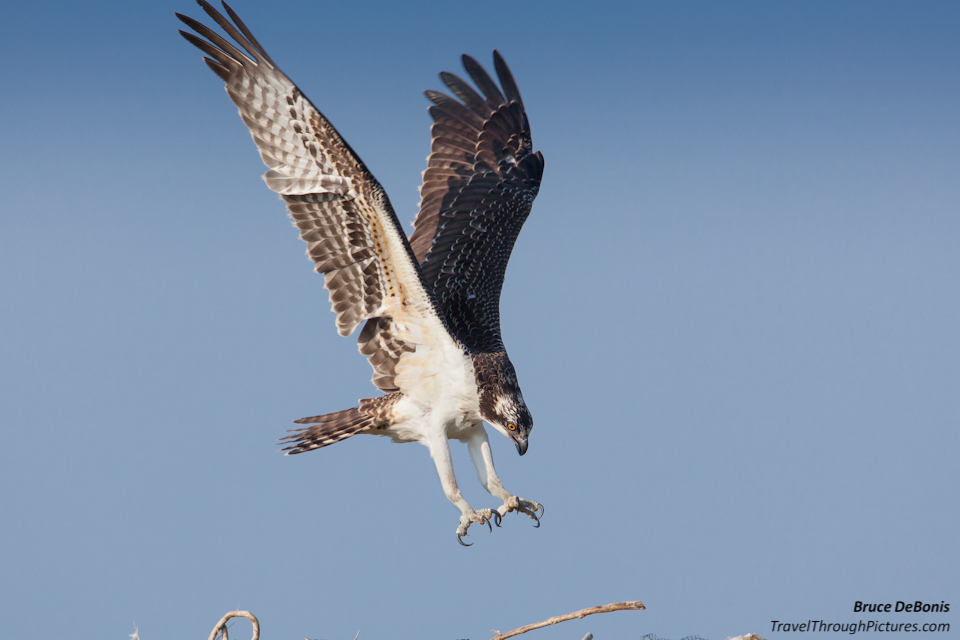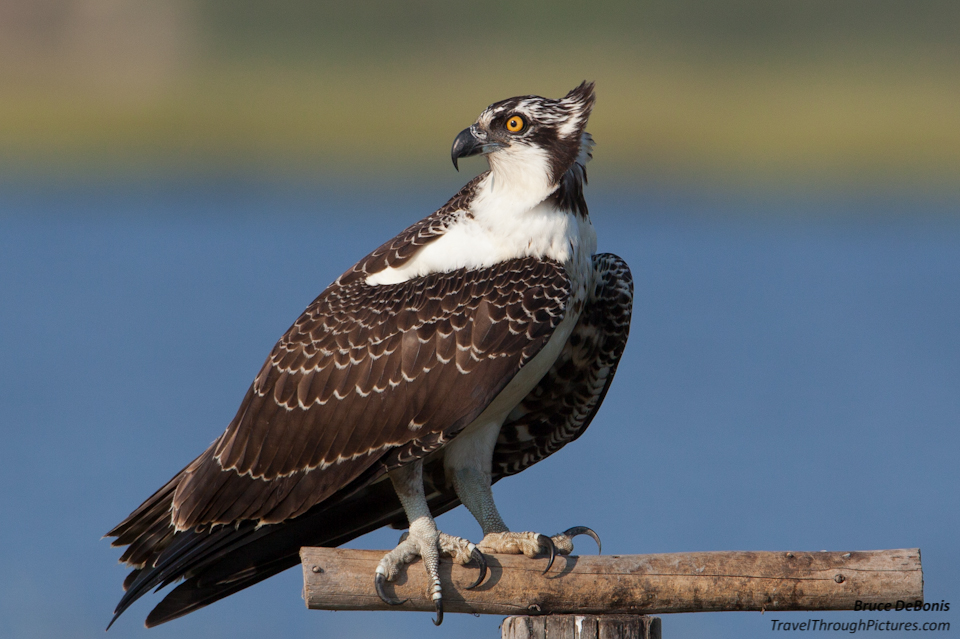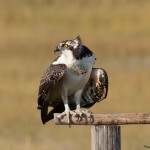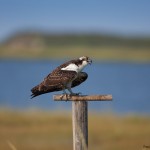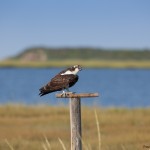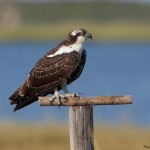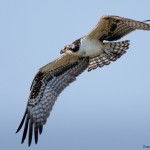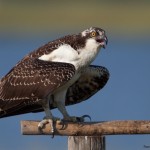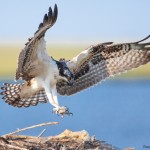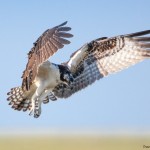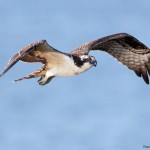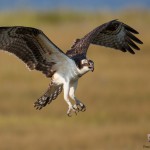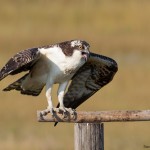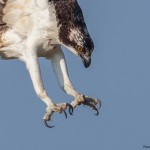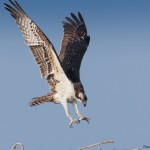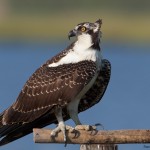Juvenile Osprey & 1.4x Teleconverter Review
Here are some comparison shots of a juvenile Osprey with and without a Canon 1.4x II teleconverter for your review. If you want to get more length and you don’t want to order something from late night TV, a teleconverter may be for you.
Keeping the Bugs Away
Those who know the Jersey shore always ask me the same question…. How do I deal with the biting summer greenhead flies? Well, I gotta secret weapon.
The salt marsh greenhead fly, Tabanus nigrovittatus, is just plain evil. They need blood to lay eggs. Rutgers University has developed simple traps that attract the flies with a plain dark glossy black color as no chemicals are needed. These stupid flies are attracted to anything black. How effective is the color black for luring these flesh eating zombie flies? A black trap can collect up to 1000 flies per hour all of whom are looking for a blood meal. Having a dark car is a curse. My car is navy blue and attracts them like a dead slab of rotting steak.
I’ve seen these flies carrying off small pets along with six-packs of cheap beer. When they bite, you jump. Screaming is required. They take chunks. So what to do besides carrying a few pints of restorative O negative around?
The effectiveness of DEET is debated, but it appears to be the only thing that may work. I use 30% concentrated stuff. Keeping the air conditioning blasting at full fan and lowest temperature will help keep them from swarming into your opened windows and doors. But I got a secret weapon…. I eat a massive Italian meal loaded with garlic the night before I head out to the marshes. Then, for lunch, I eat a double order of killer enchiladas. Yea boy! Nothing gets near me. I have to be downwind from the birds because one shift in the air currents and I will clear ‘em out like an eagle cruising for dinner. This approach also works as human birth control if you don’t care for hormones.
Juvenile Osprey
This guy or gal fledged a few weeks ago but still hangs near the nest. They hang around the nest and parents for about 50 days after fledging. The perch and nest are built by our tax dollars and are positioned not far from the road allowing for pretty darn good viewing.
500mm lens and 1.4x Teleconverter
A teleconverter, or what Canon calls as extender, is a magnifying lens that fits between your lens and camera body. It will turn my Canon 500mm f/4 L lens into 700 mighty millimeters. Unfortunately, this magnification is not free as a teleconverter contains 5 separate elements of glass and will:
- Loose one stop of light (your shutter speed will decrease by half)
- Slow your camera’s focusing system down
- Degrade image quality by reducing sharpness and adding some chromatic aberration (color fringing)
Decreasing your shutter speed is not good when shooting fidgety birds so I usually bump my ISO to 400 from 200 when using a teleconverter to compensate and keep a faster shutter speed. Higher ISOs will also degrade picture quality unfortunately. The slower focusing speed can lead to missing a shot and more than a few times, I think my focusing system just decided to take a vacation. Image quality degradation from the additional glass elements is what I don’t like the most.
Now to be fair, the negative effects of a teleconverter are slight. If you have a super expensive lens to start with, the degradation may not even be noticeable. Cheap gear will make quality degradation more apparent. I don’t like teleconverters as I just end up with fewer keepers from a day of shooting. When the sun starts to set, that is when they perform at their worst for me.
My intent, when I shot these pics, was to show why I don’t like teleconverters but I am surprised at how well the pictures came out. I really didn’t expect my results to be this good. I attribute this to pretty clear, bright light. I usually don’t shoot in such bright light as the contrasts are too strong and I, like so many others, prefer the soft glow of morning or late afternoon light. I need to run some side-by-sides in weaker light where I believe the differences will be more apparent.
Here are two pictures taken one after the other, one without the teleconverter at 500mm and the other with the 1.4x teleconverter resulting in 700mm focal length:
The two pics above are also in the scrolling portfolio at the top of the page. Just scroll through and you will find them.
Here are 100% crops of the same pictures showing some difference for those of you who like to peep at pixels:
The above pics show that when you crop down as far as you can go, down to where each picture pixel corresponds to each pixel in your monitor, you can see degradation from the teleconverter. But when you crop lightly or not at all, the sins of the teleconverter are masked by your picture viewer shrinking your photo down to fit within your monitor. Remember, photos from virtually all digital SLRs have way more pixels in them than monitors and therefore must be compressed down to fit.
Teleconverters Do Not Fit All Lenses
Check with the manufacturer before you buy a teleconverter as they are not compatible with all lenses. Canon just released version III of the 1.4x and it retails for a very high $500.00. These new ones are designed to work better with the latest releases of certain, very expensive Canon lenses so I recommend purchasing the older model II that I own on the used market.
The Equipment:
- Canon 5D MkII
- Canon 500mm f/4 L IS lens
- Canon EF 1.4x II extender (teleconverter)
- Gitzo 3530LS carbon fiber tripod
- Wimberley II gimbal head
- 2 pints of O negative

